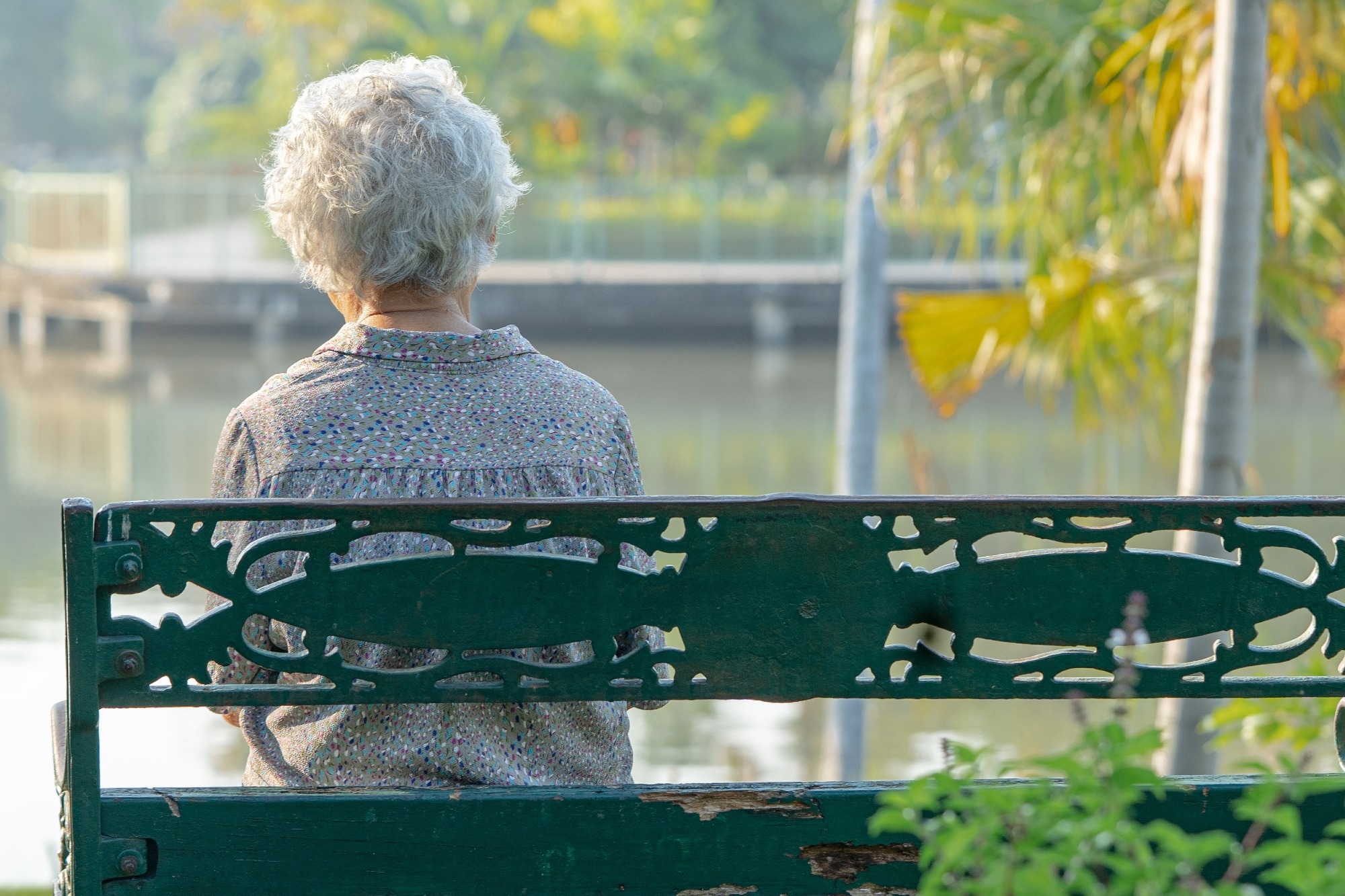Recent research in the Proceedings of the National Academy of Sciences used a prospective cohort study to investigate the contribution of loneliness to excess deaths and mortality risk among middle-aged and older individuals residing in the United States. Their findings indicate a significantly higher risk of mortality for those who reported feeling lonely during three or more survey rounds.
 Study: Association of cumulative loneliness with all-cause mortality among middle-aged and older adults in the United States, 1996 to 2019. Image Credit: sasirin pamai / Shutterstock
Study: Association of cumulative loneliness with all-cause mortality among middle-aged and older adults in the United States, 1996 to 2019. Image Credit: sasirin pamai / Shutterstock
Background
A survey conducted in 2018 estimated that 27% of people between the ages of 50 and 80 felt isolated from others; in 2020, this proportion had more than doubled to 56%, clearly exacerbated by the coronavirus pandemic. As of early 2023, it remained at pre-pandemic levels, at 34%.
Loneliness, which researchers have described as the gap between desired and actual social connection, can increase emotional stress, blood pressure, and the risk of heart disease while accelerating cognitive decline. Numerous studies have also quantified the correlation between social isolation and mortality, including one that showed that lonely individuals have an increased risk of dying within 30 days of nonelective surgery. However, these studies measured loneliness at a single point or during a short period.
This approach risks conflating intermittent loneliness, which could be followed by beneficial coping strategies, with prolonged isolation leading to chronic health conditions and associated mortality. Accounting for the dynamic and time-varying nature of loneliness and considering its cumulative impact is an important step toward quantifying its long-term consequences and designing effective policies to alleviate them.
About the study
The Health and Retirement Study (HRS) has followed a representative sample of Americans since 1992 through a longitudinal panel design, conducting surveys once every two years. During each survey round, participants were asked if they felt lonely.
For this study, researchers restricted the HRS dataset to observations from 1996-2004 to measure the experience of loneliness and the period 2004-2019 to measure mortality. They included individuals who were at least 50 years old in 1996 and were still alive in 2004 and excluded those with incomplete data on reported loneliness.
Cumulative loneliness was categorized as never, once, twice, thrice, or more. Deaths were confirmed by the next-of-kin and validated through the National Death Index. Potential confounding variables were included as controls, including sociodemographic characteristics like age, gender, race/ethnicity, marital status, education, employment, and household wealth.
Researchers also used data on how many people lived in the respondents' households, how many close friends and relatives lived in their neighborhoods, and how often they socialized with neighbors to calculate an index of objective social isolation. They controlled for health-related factors such as depression, obesity, and comorbidity.
Considering these factors, the adjusted association between cumulative loneliness and mortality was investigated by calculating a hazard ratio (HR) obtained from fitting an age-stratified Cox proportional hazards regression model.
Findings
The analysis included 9032 participants with 93,684 observations in the form of person-years between 2004 and 2019. At the beginning of the study, participants were 63.99 years old on average; 62.51 were women. They were followed for a median time of 10.37 years.
Younger people were less likely to experience loneliness than their older counterparts, while women were more likely to report feeling lonely than men. Being married, non-Hispanic White, employed with pay, and wealthy were also factors associated with lower loneliness. While 61.05% of respondents reported never feeling lonely, 11.84% were lonely during three or more survey rounds.
Researchers identified 106 excess deaths among those who felt lonely during one survey wave. Similarly, they noted 202 more deaths per 10,000 person-years than expected among those who reported two periods of loneliness and 288 for those who reported three or more. In terms of mortality risk, those who reported loneliness three or more times were at 1.16 times higher risk of mortality during the study than those who had never been lonely. These findings were strengthened through robustness checks to rule out the possibility of reverse causation and information bias.
Conclusions
This study is among the first to highlight the contribution of cumulative loneliness to mortality in middle-aged and older people, further establishing a dose-response association between the frequency of loneliness and mortality risk. Strengthening social networks, animal therapy, and physical activity are all promising interventions to lessen social isolation.
Addressing this public health issue and meaningfully improving the quality of life for many could increase life expectancies and reduce excess deaths. However, further investigation is needed to confirm these results in other settings and populations.
Journal reference:
- Association of cumulative loneliness with all-cause mortality among middle-aged and older adults in the United States, 1996 to 2019. Yu, X., Cho, T., Westrick, A.C., Chen, C., Langa, K.M., Kobayashi, L.C. Proceedings of the National Academy of Sciences (2023). https://doi.org/10.1073/pnas.2306819120, https://www.pnas.org/doi/full/10.1073/pnas.2306819120